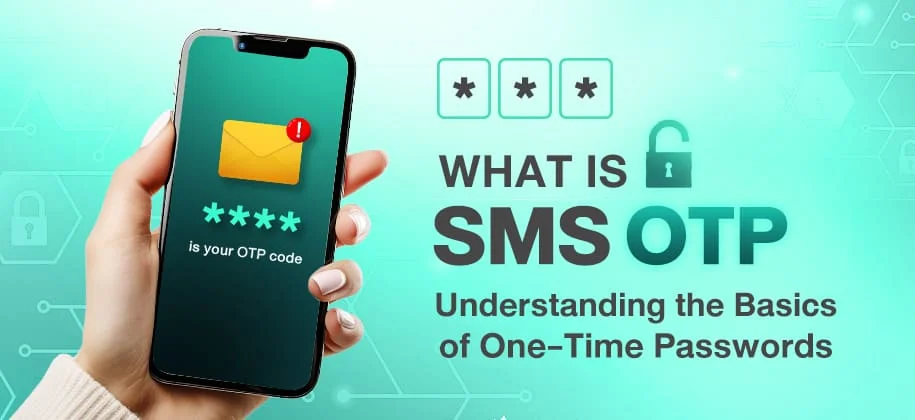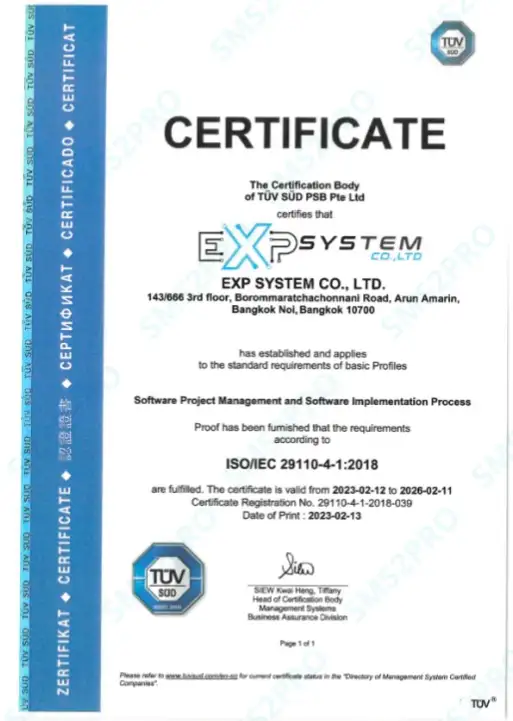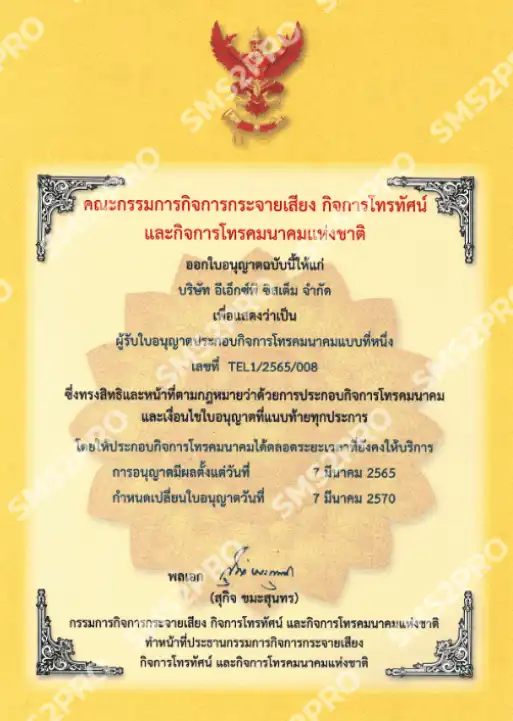

Introduction
Have you ever felt frustrated trying to remember multiple passwords for your online accounts? You're not alone. In an era where convenience is king, security has never been more important! And into this comes SMS OTP (One-Time Password) — a game-changer in securing your online accounts.
Using SMS OTP, you do not have to worry about complicated passwords and care about hackers stealing your passwords. Instead, a one-time code is sent directly to your phone so that only you have access to your account. It’s like having a personal bodyguard for your digital existence.
Dream of a world where passwords are a distant memory and lost accounts are a thing of the past. The great combination of security and simplicity — unlock easy access without sacrificing safety — SMS OTP
But, what is SMS OTP in the first place? What’s the difference to regular passwords? And how can you use it to bolster your online security? In this blog, we are going to look at One-Time Passwords in reader-friendly language, from what they are made of to what they can do in the future. It's time to dive in and explore everything there is to know about SMS OTP.
Defining SMS OTP
In order to appreciate digital security, we must explore one of the most common forms of authentication: SMS OTP. In this section, we will see what exactly is SMS OTP, how it works, its advantages, and where it is commonly used.
What is SMS OTP?
SMS OTP (Short Message Service One-Time Password): SMS OTP is an authentication method that enables you to receive a unique, time-sensitive one-time password (OTP) - an exclusive and ephemeral code that is created for a single use via an SMS message on your mobile phone. This is a one time password which adds additional security to your online accounts or transactions.
This means whenever you log-in or complete an action that requires your identity to be verified, a random code is generated on the system and sent to your registered phone number. You then input this code to confirm your identity and in doing so, you have told the app that you can access the mobile device associated with the account.
Key characteristics of SMS OTP include:
- Uniqueness: Each code is generated randomly and used only once.
- Time sensitivity: The code expires after a short period, typically a few minutes.
- Device-specific: The code is sent to a particular mobile device associated with your account.
How Does SMS OTP Work?
SMS OTP is an effective yet straightforward process. Here’s how it works, step by step:
Step 1: User Request
The user requests an action authenticated (e.g. logging into an account, making a payment, and any sensitive action).
Step 2: OTP Generation
When a request is made, the system generates a random OTP (often 6–8 digits long). The aforementioned is an interim code that is specific and individual.
Step 3: OTP Delivery
An OTP is delivered to the user’s mobile number registered to their account by SMS. The OTP and its expiration time instructions are usually included in the message.
Step 4: User Verification
The user gets the SMS, and enters the OTP in the desired field and submits the verification.
Step 5: Authentication
The system verifies the input OTP with the generated code and verifies it. If it does, access is authorized and the user can continue with the action. If the OTP entered is wrong or the time-out has expired, the process is stopped to ensure no unauthorized access has been made.
This process ensures that even if someone has your regular password, they can't access your account without also having physical possession of your mobile device.
Benefits of using SMS OTP
There are several benefits of implementing SMS OTP for users as well as for businesses:
- Greater security: SMS OTP adds another barrier of security, making it far less likely for someone to gain unauthorized access.
- Perfectly usable: Nearly all are more or less aware with text messages, so SMS OTP is easy to understand and use.
- Widespread accessibility: Almost everyone owns a mobile phone that can receive an SMS, and this method is therefore widely accessible.
- Authenticate instantly: OTPs are easy to authenticate instantly since they get delivered in real time.
- Affordable: SMS OTP is more affordable to set up and keep up than hardware tokens or biometric systems.
- Versatility: SMS OTP may do everything from user verification to transaction confirmation.
- Eliminates password fatigue: Users no longer have to memorize several complicated passwords for different accounts.
| Benefit |
Description |
| Enhanced Security | Adds a second layer of authentication |
| User-Friendly | Easy to understand and use |
| Accessibility | Works with any SMS-capable phone |
| Real-Time | Immediate delivery and verification |
| Cost-Effective | Lower implementation and maintenance costs |
| Flexible | Suitable for various authentication needs |
| Reduces Password Fatigue | Eliminates need for multiple complex passwords |
Common applications of SMS OTP
SMS OTP has been useful in many sectors and applications being a versatile and useful feature. Here are some typical use cases:
- TABLE GRAPHIC
- Online Banking:
- Account logins
- Transaction approvals
- Fund transfers
- Adding new payees
- E-commerce:
- Account creation
- Password resets
- High-value purchase confirmations
- Social Media:
- Two-factor authentication for account logins
- Account recovery processes
- Corporate Security:
- VPN access
- Employee portal logins
- Sensitive data access
- Government Services:
- Citizen portal logins
- Document submissions
- Benefit claims
- Healthcare:
- Patient portal access
- Telemedicine appointment confirmations
- Prescription refill authorizations
- Travel and Hospitality:
- Booking confirmations
- Check-in processes
- Loyalty program account access
- Education:
- Student portal logins
- Exam access
- Grade release authorizations
- Cloud Services:
- Account logins
- Data access permissions
- API authentication
- IoT Devices:
- Smart home device setup
- Remote access to connected devices
- Security system arming/disarming
These end usages showcase SMS OTP's diverse applicability across industries and use cases. This security makes it a powerful tool in our increasingly digital world, as its ability to add a layer of security to sensitive operations.
SMS OTP is a very important element that improves the security of many online operations as we have seen. Since then, its simplicity, power, and universal applicability have made it a staple for many organizations that need to protect users' accounts and sensitive data.
And now you know what SMS OTP is, how it works, its benefits, and where it’s commonly used, so now let’s discuss how these one-time passwords actually function. In the following segment, we will analyze the inner workings of a one-time password to help you better understand the technology behind this common authentication mechanism.
The Anatomy of a One-Time Password (OTP)
After defining SMS OTP, lets explore the structure and arrangements that create a unique identity for our security. Both users and developers also need to understand the anatomy of a multi-factor authentication or one-time password.
Length and Complexity
The longer and more complex the SMS OTP is, the more effective it is to make the system secure. Experiment with different systems — most one-time passwords aim to be a sweet spot between security and usability.
SMS OTPs are generally between 4 to 8 characters long. Longer passwords make a higher security, however, it can also increase the difficulty for user input. To demonstrate the relationship between password length and its user-friendliness below, we provide details of some standard OTP lengths and their features:
| OTP Length | Security Level | User-Friendliness | Common Use Cases |
| 4 digits | Basic | High | Banking apps, social media |
| 6 digits | Moderate | Moderate | Email verification, online shopping |
| 8 digits | High | Lower | Financial transactions, sensitive data access |
You'll notice that 6-digit OTPs are becoming increasingly popular as they offer a good balance between security and usability. However, the ideal length depends on the specific application and security requirements.
Complexity is another crucial factor. Most SMS OTPs consist of:
- Numeric digits (0-9)
- Alphabetic characters (A-Z, sometimes a-z)
- Special characters (in some cases)
Having both numbers and letters increases the possible combinations, therefore making the OTP more secure. Nonetheless, OTPs that consist only of numbers remain common because they will be easier to enter while typing in mobile devices.
Generation Methods
The method used to generate an SMS OTP significantly impacts its security. Here are some common generation methods you should know about:
- Time-based OTP (TOTP): In this method, OTPs are generated based on the current time. This requires the server and the electronic authentication device (usually your smartphone) to have synchronized clocks.
- HMAC-based OTP (HOTP): This algorithm uses a secret key and a counter to generate OTPs. The counter is incremented every time an OTP is generated making sure each password is unique.
- Random Number Generators: Some systems use cryptography techniques to secure random number generators to create OTPs. These are less predictable but require more server storage to keep track of those issued OTPs.
- Combination Methods: Advanced systems could deploy a blend of the above methods for even greater security.
Expiration Timeframes
One of the important security aspects of an SMS OTP is its limited lifespan. In general, most OTPs are valid only for a limited amount of time, usually 30 seconds to 10 minutes. This expiration timeline is functional for a number of reasons:
It allows users to be proactive, providing an added layer of security for time-sensitive tasks
Here are some general recommendations on OTP expiry time:
30 seconds to 2 minutes: Super secure, highly time-sensitive tasks
3 to 5 minutes: Typical for most authentication needs
5-10 mins: Used when longer processing times are expected
Keep in mind that shorter expiration times are better security-wise, but will frustrate users who may take longer to enter the OTP.
Security Features
To enhance the security of SMS OTPs, several additional features are often implemented:
- Request Limiting: This allows us to limit the number of OTPs that can be requested during a certain timeframe to block brute-force attack.
- IP Tracking: OTP requests can be monitored at the IP level, and prevent suspicious activity from unanticipated locations.
- Device Fingerprinting: his method uses specific traits of the user's device to create an additional authentication force.
- Encryption: OTPs are often encrypted during transmission to protect against interception.
- Multi-factor Authentication (MFA): SMS OTP is frequently utilized in a comprehensive MFA approach, merging something you know (password) with something you possess (phone for OTP).
- OTP Masking: A variant of the above, for SMS OTPs , some systems will only partially show the OTP, revealing only the last few digits, to guard against over-the-shoulder snooping.
By understanding these components of SMS OTPs, you can better appreciate the security hence you can decide how to implement or use these in various applications. As we move forward, we'll explore how SMS OTPs compare to other authentication methods, providing you with a comprehensive view of this critical security feature.
SMS OTP vs. Other Authentication Methods
The scenario with SMS OTP stands out from other types of authentication methods, with respect to the safety of your accounts online. Now let's take a look at how it compares to other popular options to know where it shines and where it falls behind.
Comparison with traditional passwords
The approach of the traditional passwords and an SMS OTP is completely different in terms of how they work:
| Feature | Traditional Passwords | SMS OTP |
| Reusability | Reusable | Single-use |
| Memorization | Required | Not required |
| Vulnerability to brute force attacks | Higher | Lower |
| Risk of password reuse | High | N/A |
SMS OTP offers enhanced security by eliminating the need for memorization and reducing the risk of password reuse across multiple accounts.
SMS OTP vs Email OTP
SMS OTP offers several advantages over email-based OTP, including:
- Faster delivery
- Higher accessibility (no internet required)
- Less susceptible to phishing attacks
- Harder to intercept compared to email
SMS OTP vs. authenticator apps
While both SMS OTP and authenticator apps provide strong security, they have distinct characteristic
- SMS OTP:
- No app installation required
- Works on any mobile phone
- Carrier-dependent
- No app installation required
- Authenticator apps:
- Offline functionality
- Not vulnerable to SIM swapping attacks
- Must have a smartphone with an app installed
- Offline functionality
SMS OTP provides a good level of security , also quick and easy to use, thus prefers by many organizations. But, the decision of using SMS OTP or its alternatives depends on unique security needs and user preferences.
Conclusion
SMS OTP is essential in the security of many online platforms and services. Knowing its first principles, working overall as well as implementation, you will come to know its role in protecting your digital identity. Although SMS OTP is far more secure and reliable than a conventional password system, one should evaluate the specific threats and design accordingly.
Authentication methods will continue to evolve as technology advances. Keep an eye on news regarding SMS OTP and other security measures to remain one step ahead of potential threats. Leverage these innovations to enhance your online security and protect your sensitive information from unauthorized access through the best practices.
Read More : [SMS OTP: Exploring the Challenges and Opportunities of SMS-Based Authentication]






Software Implementation Process

reliable SMS services





